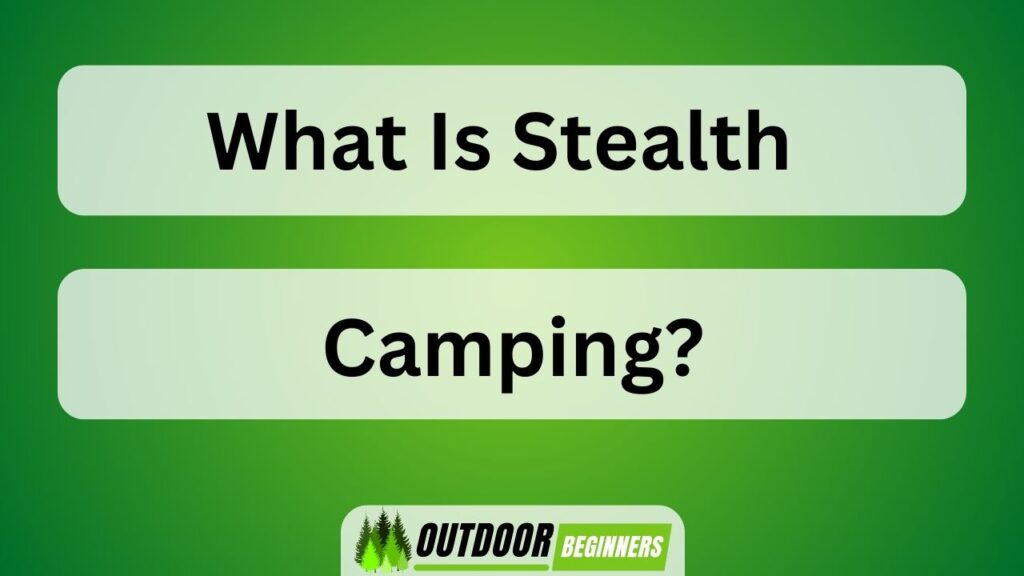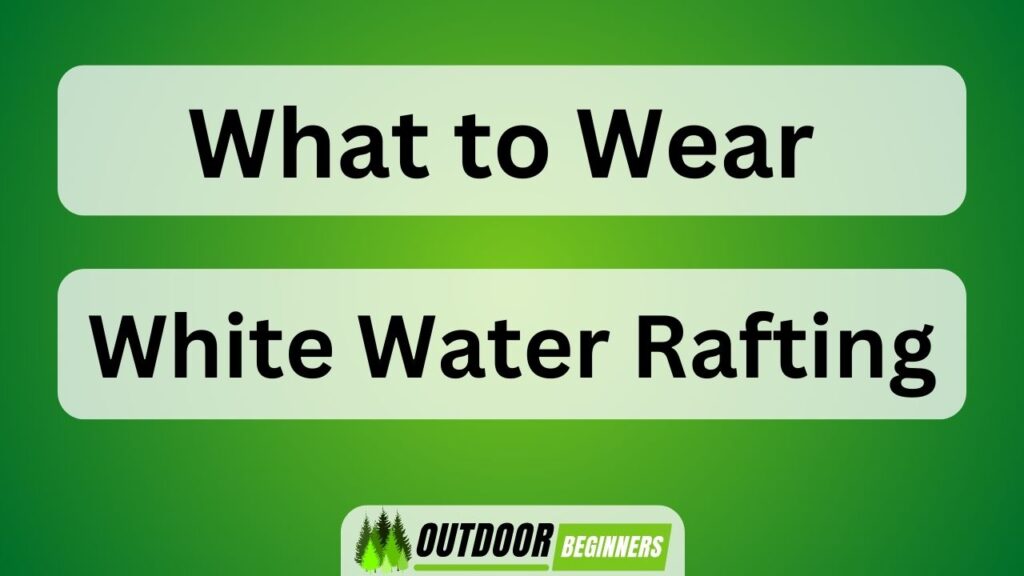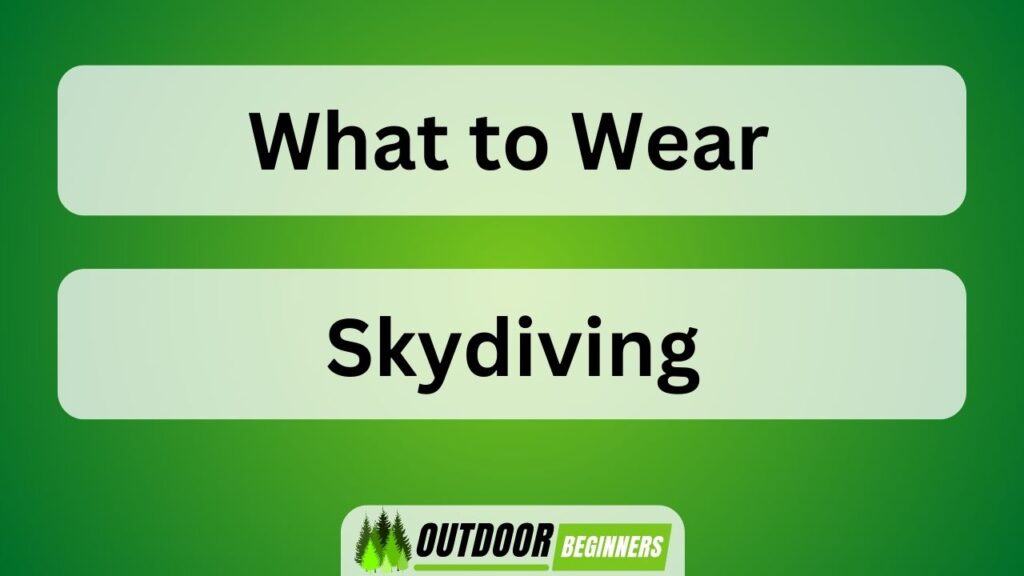Are you tired of crowded campgrounds and noisy neighbors? Well, we’ve got the solution for you! Welcome to our guide on stealth camping.
We’re here to show you how to embrace the thrill of camping incognito. From finding hidden spots in nature to packing the essential gear, we’ll help you master the art of staying under the radar.
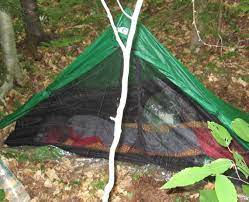
So join us as we reveal the secrets and benefits of this off-the-grid adventure. Get ready for a truly unique outdoor experience!
Key Takeaways of What Is Stealth Camping
- Stealth camping involves staying hidden and unnoticed in unconventional locations.
- It offers benefits such as privacy, flexibility, cost-effectiveness, and an immersive experience.
- Essential gear for stealth camping includes a lightweight tent, warm sleeping bag, portable camping stove, camouflage gear, and a portable toilet.
- Tips for staying hidden during stealth camping include choosing a campsite carefully, minimizing noise and bright lights, setting up and packing up camp discreetly, practicing Leave No Trace principles, and respecting local regulations and private property boundaries.
Differentiating Stealth Camping From Traditional Camping
Stealth camping is distinct from traditional camping in several ways. When it comes to stealth camping techniques, we rely on staying hidden and unnoticed, often choosing unconventional locations such as urban areas or private property.
Traditional camping, on the other hand, is done at designated campsites with amenities and facilities.

The main challenge with stealth camping lies in potential legal issues. Since we are essentially trespassing or camping without permission, there is always a risk of being confronted by authorities or facing legal consequences.
It’s crucial to be aware of local laws and regulations before embarking on a stealth camping adventure to minimize these risks.
Despite the potential legal issues, many people find the benefits of stealth camping outweigh the drawbacks.
Benefits of Stealth Camping
One of the advantages of this type of outdoor experience is that you can enjoy nature without having to deal with crowded campgrounds and noisy neighbors.
- Privacy: With stealth camping, you have the freedom to choose secluded locations away from the hustle and bustle of popular campsites.
- Flexibility: You’re not bound by reservation dates or specific campgrounds, allowing you to explore different areas on a whim.
- Cost-effective: Stealth camping eliminates the need for pricey campground fees, making it a budget-friendly option for outdoor enthusiasts.
- Immersive Experience: By staying off the beaten path, you can fully immerse yourself in the natural surroundings and truly connect with nature.
Stealth camping offers these perks and more, providing a unique way to experience the great outdoors. Now that we’ve highlighted its advantages, let’s delve into the essential gear needed for a successful stealth camping adventure.
Essential Gear for Stealth Camping
When going on a stealth camping adventure, it’s important to have the essential gear that will ensure a successful outdoor experience. Here are some must-have equipment for stealth camping:
| Gear | Description | Importance |
|---|---|---|
| Tent | A lightweight and compact tent that blends well with the surroundings | Provides shelter and privacy |
| Sleeping Bag | A warm and comfortable sleeping bag that can withstand cold weather | Ensures a good night’s sleep |
| Camping Stove | A portable stove for cooking meals discreetly | Allows for hot meals |
| Camouflage Gear | Clothing and accessories that help you blend in with the environment | Helps stay hidden |
| Portable Toilet | A discreet toilet option for when nature calls | Maintains cleanliness |
In addition to having the right gear, here are some tips for staying hidden during stealth camping:
- Choose your campsite carefully, opting for secluded areas away from popular trails or campsites.
- Keep noise to a minimum and avoid using bright lights at night.
- Set up camp late in the day and pack up early in the morning to minimize chances of being spotted.
- Practice Leave No Trace principles, ensuring you leave your campsite as you found it.
- Be aware of local regulations and respect private property boundaries.
Finding Suitable Stealth Camping Spots
If you’re looking for suitable spots to camp without being noticed, it’s important to consider the level of seclusion and proximity to popular areas. Finding secluded locations is key to avoiding detection and enjoying a peaceful camping experience. Here are some tips for finding the perfect spot:
- Look for remote areas away from main roads or hiking trails.
- Consider camping near bodies of water such as lakes or rivers, as they often offer natural barriers that provide extra privacy.
- Choose spots with dense vegetation or tree cover to blend in with the surroundings.
- Scout out potential locations during off-peak times when there are fewer people around.
Safety Precautions for Stealth Camping
To ensure your safety while staying hidden, remember to pack a first aid kit and familiarize yourself with basic self-defense techniques. Safety is paramount when engaging in stealth camping, as you may find yourself in remote locations with limited access to help.
Start by choosing the right gear for your trip. Consider lightweight yet durable equipment that won’t compromise your stealthiness. Opt for dark-colored tents or bivvy sacks that blend into the surroundings, and invest in a good quality sleeping bag suitable for the weather conditions you’ll encounter. Additionally, make sure to carry a portable stove for cooking rather than building open fires, which can attract attention.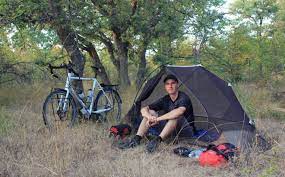
By following these safety tips and selecting appropriate gear, you can minimize risks and enjoy a safe stealth camping experience.
Now that we have covered safety precautions, it’s important to also consider leave no trace principles for stealth camping…
Leave No Trace Principles for Stealth Camping
Remember, it’s crucial to practice leave no trace principles in order to minimize your impact on the environment while stealth camping. By following responsible camping practices, we can enjoy the beauty of nature without leaving a negative mark behind.
Here are some important guidelines to keep in mind:
- Dispose of waste properly: Pack out all trash and dispose of human waste at least 200 feet away from water sources.
- Leave natural objects: Avoid picking flowers or disturbing wildlife habitats.
- Minimize campfire impact: Use established fire rings if available or use a stove instead. Make sure to fully extinguish fires before leaving.
- Respect wildlife: Observe animals from a distance and never feed them.
Tips for a Successful Stealth Camping Experience
Make sure you bring a reliable and lightweight tent for your stealth camping adventure. Planning ahead is crucial when it comes to having a successful stealth camping experience.
One of the most important aspects of stealth camping is blending in with your surroundings, and this is where camouflage techniques play a vital role.

Before embarking on your trip, research the area where you plan to camp. Look for natural features that can provide cover, such as dense foliage or rocky outcrops. Choose a tent color that matches the surrounding environment, like earth tones or forest green.
When setting up camp, be mindful of your noise level and minimize any unnecessary movements. Keep your gear organized and hidden from view so as not to attract attention. Avoid using bright lights at night and opt for low-profile cooking equipment.
Frequently Asked Questions
Are There Any Legal Restrictions or Regulations Regarding Stealth Camping?
There can be legal implications and consequences when it comes to stealth camping. It’s important to be aware of any restrictions or regulations in the area where you plan to camp to avoid potential issues.
Can I Use a Traditional Camping Tent for Stealth Camping?
Using alternative shelter for stealth camping has both advantages and disadvantages. While a traditional camping tent can be used, it may not provide the same level of concealment as other options.
How Do I Find Suitable Stealth Camping Spots in Urban Areas?
When it comes to finding suitable stealth camping spots in urban areas, we rely on our knowledge of the city’s layout and our ability to blend in with the surroundings. Safety measures are crucial for a successful stealth camping experience.
What Are Some Common Safety Concerns and How Can I Address Them While Stealth Camping?
When stealth camping, it’s important to prioritize safety. We should take necessary precautions and be aware of our surroundings. Safety measures like choosing well-lit areas, practicing self-defense techniques, and keeping a low profile can help address common concerns.
Are There Any Specific Techniques or Strategies to Minimize My Impact on the Environment While Stealth Camping?
When stealth camping, we employ eco-friendly practices to minimize our impact on the environment. By following Leave No Trace principles, such as packing out waste and using biodegradable products, we ensure nature remains pristine for future campers.
Conclusion
Overall, stealth camping offers a thrilling and adventurous alternative to traditional camping. It allows us to escape the crowds and immerse ourselves in nature’s hidden gems. By embracing the art of blending in, we can experience the wilderness like never before.
Equipped with essential gear and armed with knowledge of suitable spots, safety precautions, and Leave No Trace principles, we are ready to embark on a successful stealth camping journey.
So let’s step into the shadows, where wild stories are waiting to be written and unforgettable memories are just a whisper away.
